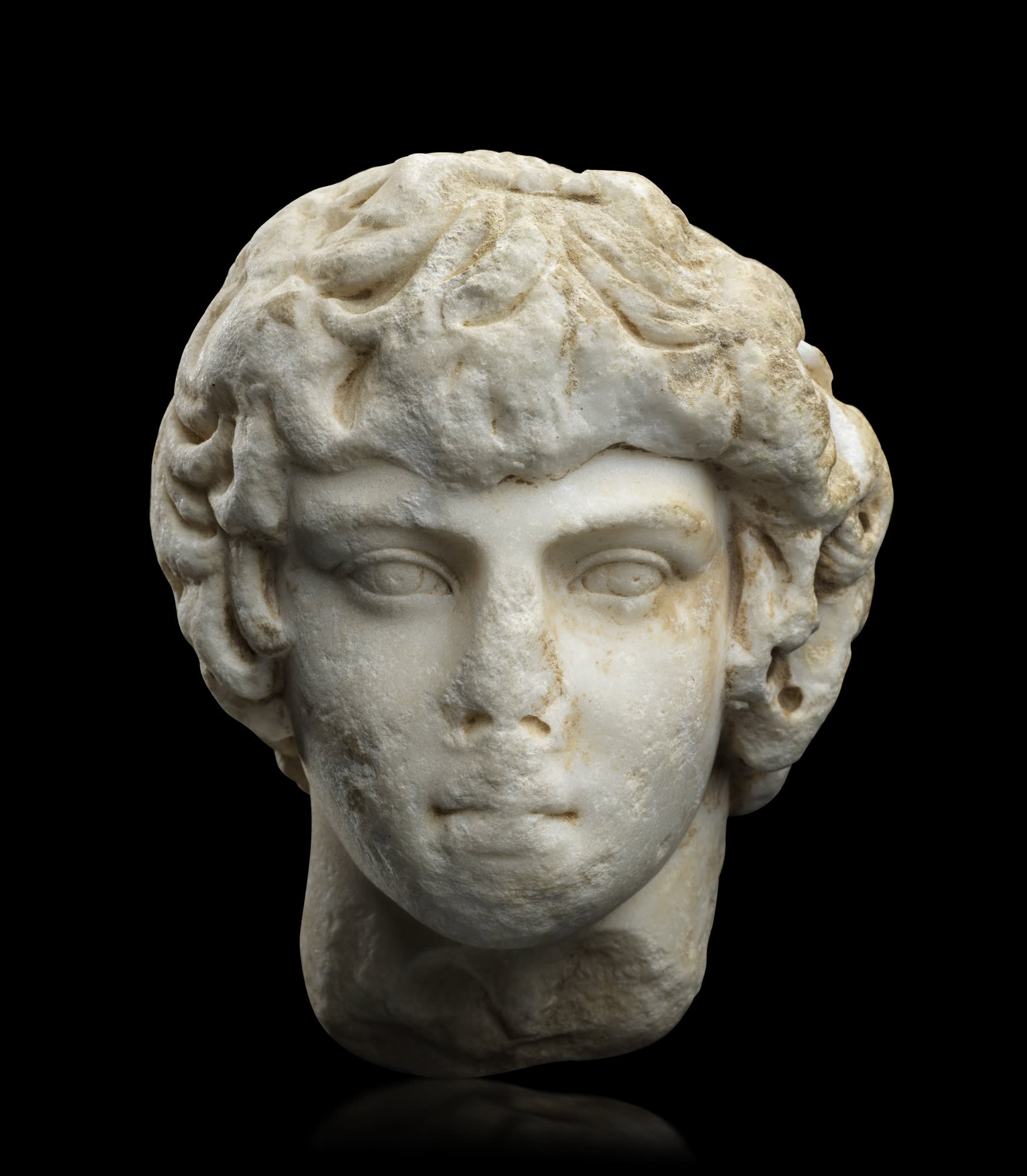ANTINOUS

A ROMAN MARBLE PORTRAIT HEAD OF ANTINOUS
Hadrianic, circa AD 135
Height: 12.9 cm
The story and image of Antinous, the young beloved of the Roman emperor Hadrian, has captivated artists and writers through the centuries; he has became a symbol of lost love, beauty, and tragic youth. Although we know very little about his early life and background, his untimely death and the highly unusual public response from the grief-stricken Hadrian, ensured that this incredibly beautiful young man became one of the most enduring images from Imperial Rome. The portrait type of Antinous is one of the most recognisable subjects from classical antiquity, and in number is only surpassed by images of the Emperors Augustus and Hadrian himself.

Despite the scarcity of sources on the pair's relationship, Hadrian's unprecedented actions following Antinous's death, strongly suggest that a deep emotional bond existed between the emperor and Antinous.
Later in AD 130 during an imperial visit to Egypt, Antinous, drowned in the River Nile in the region of Antinoe (the city that Hadrian then founded in his honour). The exact circumstances of his death are still unknown: ancient authors attribute them to fate, suicide, even murder, or a ritual sacrifice (Cassius Dio, Roman History, 69).

The artist commissioned to create the official portrait type of Antinous remains anonymous. However, there is no doubt they created a masterpiece, fitting for one of the last pagan gods of antiquity and emblematic of what has been coined the 'Hadrianic Renaissance'. The countless images set up by Hadrian form a very visible and highly influential part of his legacy.
This head, believed to be from Ephesus originally, is a good example of the sophisticated portrait type created by imperial sculptors to incorporate what must have been actual features of the boy in an idealised image that conveys a god-like beauty. His characteristic facial features include an oval face, smooth complexion, almond-shaped eyes, and full lips, as well as his distinctive hairstyle of thick, wavy locks radiating from the crown of his head. For similar see a small head in the British Museum (acc. no.1973,0302.4): Christoph W. Clairmont, Die Bildnisse des Antinous: Ein Beitrag zur Porträtplastik unter Kaiser Hadrian, 1966, no. 22, p. 46, fig. 18; also in Athens, National Museum, acc. no. 518: Clairmont, op.cit., no. 4 p. 39.